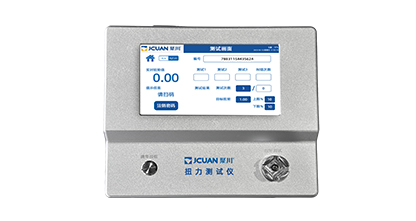Torque testers are widely used in areas such as tool calibration and screw tightening quality inspection.The display screen serves as the core user interface,and its parameter settings directly impact test efficiency and data accuracy.Understanding the key parameters on the display helps you better master the instrument's functions and usage techniques.
First,the torque unit display.Most torque testers support multiple unit switches,such as N·m,kgf·cm,and lbf·in.Users can select the appropriate unit based on actual process standards to ensure data conforms to inspection standards.
Second,the real-time torque value display reflects the current force state and is often combined with a capture function to record peak data during the screw tightening process.This parameter is a key factor in screw tightening quality analysis.

Furthermore,many devices feature a curve display or bar graph,which displays torque trends in real time,making it easier to identify transient torque fluctuations,thread slippage,or over-tightening.This is particularly important for high-frequency use or quality control.
Test modes are also common on the display,including Track,Peak,and First Peak,each tailored to different testing needs.Users can quickly switch between these modes to suit their testing tasks.
Some models also feature upper and lower limit settings and alarm displays.If the test value exceeds the set range,the screen will display an alarm,facilitating quick problem identification on the production floor.
By properly configuring and understanding these display parameters,users can more effectively collect and analyze torque data,further improving quality management.